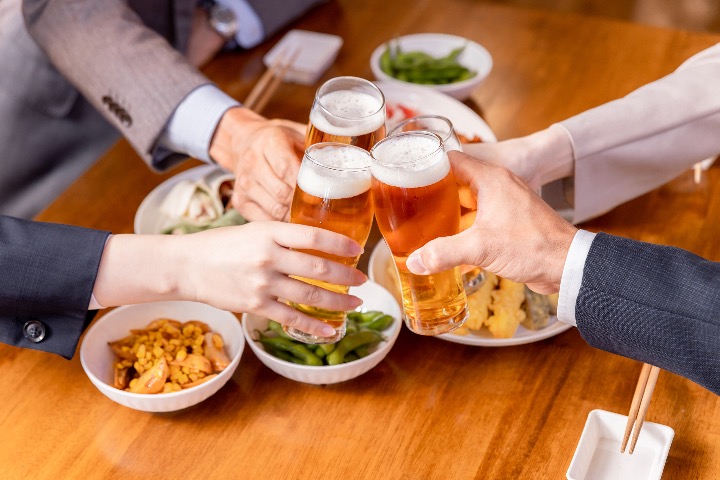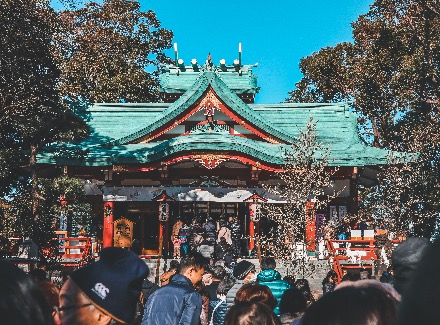Nomikai Culture in Japan: From Tradition to Transformation
Few workplace traditions in Japan are as well-known, or as debated, as nomikai. Often summed up by the word “nominication” (nomu = to drink, communication), these after-hours drinking parties have long been more than casual gatherings; for decades, they served as an extension of the office, where relationships were built, information was exchanged, and unspoken rules of teamwork played out over shared plates and poured drinks.
While the modern version is evolving, understanding how nomikai began, what they once represented, and how they are changing offers a peek into a different side of Japan’s work culture, and, for newcomers, a guide to navigating them with ease.
Origins of Nomikai
The roots of nomikai (飲み会, lit “drinking gathering”) run deeper than Japan’s modern office life. Shared drinking as a way to build connection has long been part of the culture, from sake offered at shrines to lively banquet (宴会, enkai) halls where formality faded with each pour.
In the Edo period, townspeople (町人, chōnin), such as merchants and artisans, enjoyed a vibrant culture of leisure and entertainment, where group meals, theater outings, and seasonal festivities often included drinking together. While these occasions weren’t tied to workplaces, they set a precedent for alcohol as a social bridge.
Fast-forward to the postwar economic boom: nomikai had found its place in the corporate world. In the offices of the 1950s and ’60s, these gatherings gave juniors space to speak more freely with seniors and loosened the boundaries of workplace hierarchy, setting the stage for the structured, after-hours drinking culture that would dominate in the decades to come.
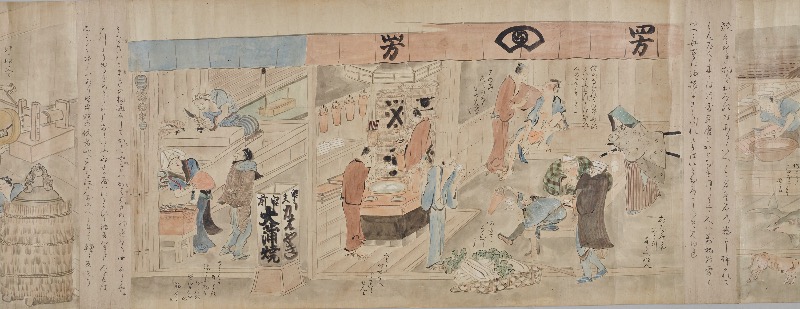
Nomikai at Its Peak (1970s–1990s)
During the Shōwa and early Heisei eras (1970s–1990s), nomikai culture was at its peak. For many salarymen, these after-work drinking sessions were an unspoken extension of the workday; declining an invitation, especially from a superior, could be seen as a sign of not wanting to be part of the team (in practice, attendance was effectively mandatory in those days). Career progression often hinged on the trust and rapport built over these evenings, with deals and promotions sometimes sealed outside the office.
A typical night began with the official ichi-jikai (一次会, “first party”), a couple of hours of food and drinks, followed by an even more informal ni-jikai (二次会,“second party”) at another bar or karaoke lounge. Some even went on to a san-jikai (三次会, third round) at a ramen stall or bar, stretching past the last train. Attending all rounds was a show of stamina and loyalty, especially during the bubble economy of the 1980s.
Etiquette was central: juniors poured drinks for seniors, distributed food, and showed attentiveness, while bosses sometimes returned the gesture as a sign of camaraderie. Despite this formality, ties were loosened (literally and figuratively), hierarchies softened, and the unspoken rule was that “what happened at the nomikai stayed at the nomikai.” Embarrassing moments were forgotten the next morning, preserving harmony and face.
For many, these gatherings forged strong bonds, allowing senpai and kōhai to speak more openly as “drinking buddies” for a night. For others, the obligation brought stress alongside camaraderie. Still, in this era, nomikai were inseparable from Japanese corporate culture: a nightly ritual that shaped relationships, reinforced group identity, and defined Japan’s “after-five” life for decades.
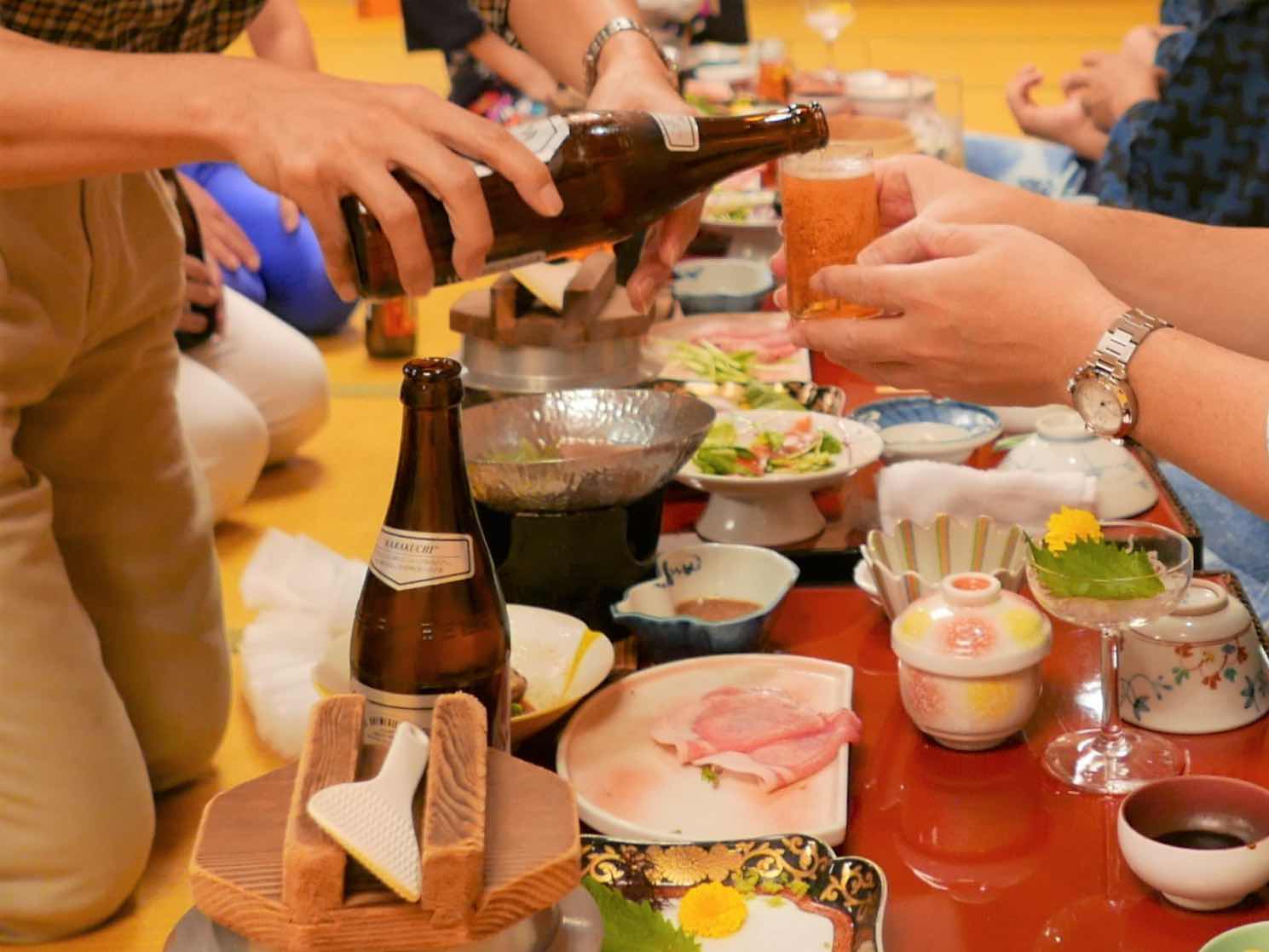
A Culture in Transition
By the 2000s and 2010s, cracks began to appear in nomikai’s once-unquestioned role. Legal reforms, shifting social values, and growing health awareness all reshaped attitudes toward after-work drinking.
One major turning point was the government’s Work Style Reform initiatives in the late 2010s, which aimed to limit overtime and protect private time. Staying out late with the boss became less compatible with a work-life balance mindset. Some companies even set rules like “no drinking parties past 10 PM” or moved social gatherings to lunchtime. The old idea that “your evening belongs to the company” began to fade, replaced by a focus on personal time and well-being.
The Rise of “Nomi-hara” Awareness
Another shift came with the growing awareness of “飲みハラ” (nomi-hara, or nomikai harassment): pressuring someone to drink, forcing attendance, or mocking those who choose non-alcoholic options. Once brushed off as harmless encouragement or “training” for newbies, such behavior is now seen as unacceptable. A 2023 Persol Research Institute survey found nearly 80% of workers view it as harassment if a boss or colleague criticizes someone for skipping a party or not pouring drinks for others.
The Pandemic Effect
COVID-19 accelerated these changes. For much of 2020 and 2021, restrictions halted nomikai entirely. And when gatherings became possible again, the revival was partial: Tokyo Shōkō Research found that by the end of 2024, only 59.6% of companies held year-end and new-year parties, almost 20 points lower than before COVID numbers (78.4% in 2019). Some of the reasons given were telling: low employee interest and many people having grown accustomed to not having these events.
Interestingly, some young employees (especially those in their 20s) who might have begun working during the pandemic were eager to attend nomikai; not for the alcohol, but to finally meet colleagues face-to-face. In a 2024 Job Sōken survey, the top reasons cited were to deepen friendships with colleagues, talk in person, and build relationships with bosses.
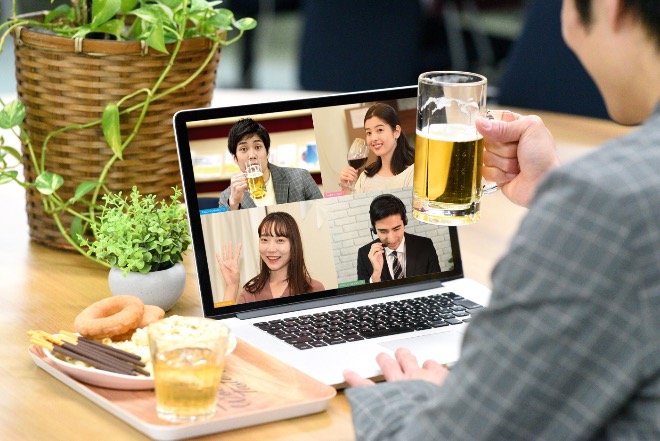
Today’s Nomikai
Today’s nomikai looks quite different from the rigidly expected affairs of decades past. Participation is lower, formats are lighter, and attitudes are more mixed. Surveys show a clear decline: in 2017, roughly three-quarters of workers said their workplace held nomikai of some kind, but by 2025 that figure had dropped to about 60%. Even the once-ubiquitous year-end bōnenkai (忘年会, lit “forget-the-year party”) is no longer a given.
When a nomikai does happen, though, turnout tends to be high. A 2025 survey by Recruit reported an average attendance rate of 87.9% among those invited, suggesting that fewer events may actually make the remaining ones feel more worth showing up for.
In terms of attitudes, multiple 2023–2024 surveys show a solid majority, around 60–70% across all age groups, now consider “nominication” unnecessary in business life. This challenges the stereotype that only younger “digital native” workers dislike drinking with colleagues. In fact, many seasoned employees share the sentiment, while the surprise being some workers in their 20s were even slightly more open to year-end parties than those in their 40s or 50s.
The reasons for skipping nomikai are consistent: difficulty relaxing around colleagues, the sense that it’s “overtime in disguise,” disinterest in alcohol, and cost (often ¥4,000–¥5,000 per person).
Still, the tradition isn’t disappearing entirely, only adapting. Many companies now make attendance genuinely voluntary, schedule shorter gatherings that end early, and offer more inclusive venues and menus. Non-alcoholic options are common, with “smart drinking” becoming a recognized approach. In some cases, nomikai now take place in cafes or family restaurants instead of smoky bars.
The result is a more flexible, balanced version of the tradition: one that keeps its social benefits while fitting better with today’s priorities of respect, diversity, and personal choice.
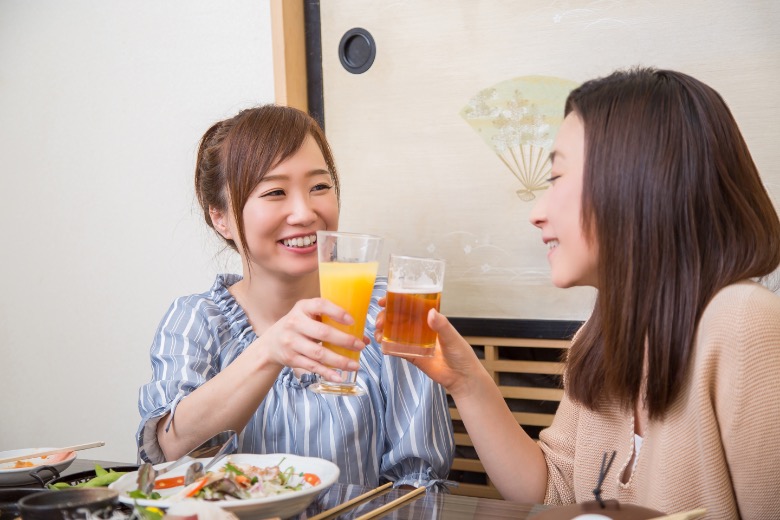
Navigating a Nomikai: Tips for Foreigners in Japan
If you are an employee or foreign intern in Japan, you may encounter nomikai in a form that balances old traditions with new sensibilities.
These days, an invite to a nomikai usually comes with a genuine tone rather than as an order, so you have the option. Formal gatherings like bōnenkai or welcome/farewell parties are still worth attending if possible, even briefly. For more casual “anyone up for drinks?” outings, you can decide based on your comfort and schedule.
If you can’t or don’t want to go, thank the person for inviting you and give a simple, polite reason; for example, that you have plans or an early start the next day (remember, in Japan, direct refusals are rare). Keep it friendly and, if you wish, mention you’d be happy to join next time. This applies just as much if you’re doing an internship in Japan as it does for long-term employees.
Basic Nomikai Etiquette
If you do decide to attend, remember to follow basic Japanese nomikai etiquette. Here’s some practical tips on how to handle yourself and enjoy these gatherings in a culturally appropriate way:
- Don’t start drinking (or eating) until the toast (乾杯; kanpai). It’s polite to wait until everyone has a drink in hand (even non-alcoholic drinks count) and the organizer or boss says a few words and initiates “Kanpai!”
- Pour drinks for others first, especially those seniors to you. If you notice someone’s glass is less than half full, you can offer to pour, using two hands and keeping the label facing up to show respect. Tip: You can control refills by leaving your glass half full: this signals you’re fine for now (and vice versa).
- Mind your speech. Even though nomikai are casual, respect is still valued. As you notice the atmosphere relaxing, you can adjust, but you still shouldn’t forget all the formalities.
- Pace yourself with alcohol. You don’t have to match anyone shot for shot; know your limits and drink at your own pace. It’s fine to get a little merry, Japanese parties often do get lively, but maintain enough composure to get yourself home safely (and never drive, Japan’s DUI laws are zero tolerance)
- Know when and how to leave. Leaving before the end is much more acceptable now. Wait for a natural pause, thank the organizer, and leave with a simple「お先に失礼します」 (“Please excuse me for leaving before you”), and make sure you’ve paid your share. For formal events, try to stay through the main speeches; for casual ones, an hour or two is fine.
- The next-day etiquette. Keep the follow-up positive: thank the organizer for the fun time and avoid teasing colleagues about the night before if things ended up getting a little wild. If you made a small mistake, a quick apology will usually be met with a smile and waved it off.
- And most importantly, enjoy the cultural experience! At its best, a nomikai reveals the more human side of Japanese work culture. You may learn more about colleagues’ personalities, humor, and ideas in one evening than in weeks at the office. It’s also a chance to share your own culture: introduce a toast from your country or talk about how company parties work back home. These moments of exchange are why nomikai, even in evolved form, continue to create bonds, memories, and stories that strengthen team unity!
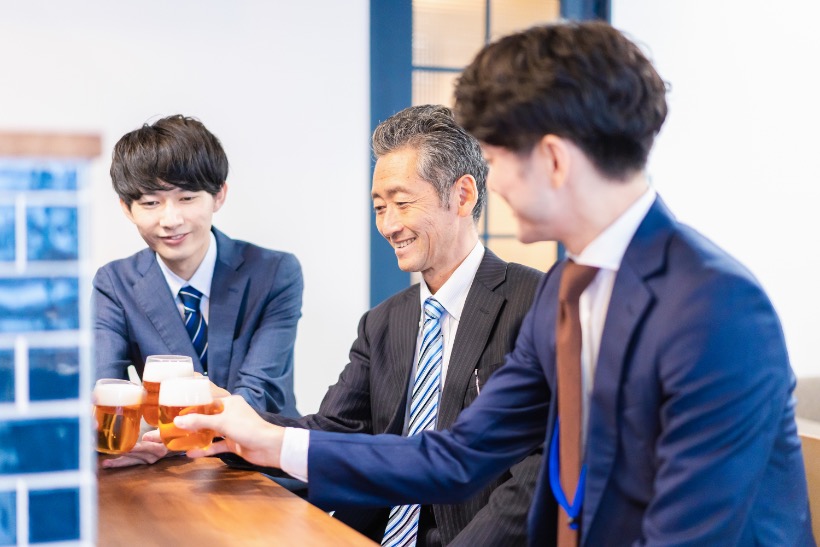
Adapting Without Losing the Core
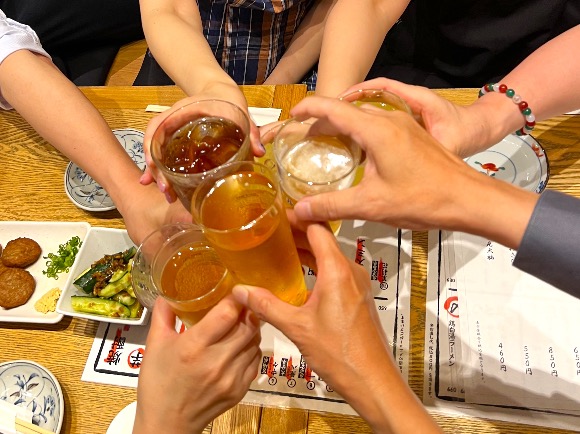
From their height in the Shōwa and early Heisei eras to their gradual transformation in recent years, nomikai mirror the changing dynamics of work, hierarchy, and social connection. Once a near-obligatory fixture of corporate life, they are now increasingly optional, shorter, and more inclusive, shaped by shifting attitudes, health awareness, and new ideas about work-life balance.
Yet, their core purpose remains: creating spaces where colleagues can connect beyond the desk, exchange ideas in a relaxed setting, and strengthen the bonds that make teamwork possible. For all the changes, the spirit of nominication endures, adapting to modern sensibilities while preserving the camaraderie that has kept this tradition alive for generations.
🍻 Your Seat at the Table!
Nomikai traditions are just one part of the rich cultural insight you’ll gain through our internships in Japan! Take part in these moments and see how they shape teamwork and communication. Join our program to experience it yourself, or get in touch with us if you’d like to learn more before jumping in!

